Propaganda - Affiches de Guerre - Affiches de Paix
Selection

120 YEARS OF MILITARY AND ANTI-MILITARY POSTERS
> Military posters
> WWI posters
> Switzerland during WWI
> The war economy during WWI
> The League of Nations posters
> Geneva 1932 – The army shoots demonstrators
> 1936 - 1939 Switzerland prepares for war
> WWII posters
> Silence, the enemy is listening to you
> WWII war economy
> Posters for the prevention of venereal diseases
> Refugees
> The atomic bomb
> Revolutionary movements
> United Nations posters
> Posters for peace
> No to the Vietnam War
> Make love not war
> The Civil Service, GSSA, Disarmament

Pour la France, versez votre or
1915 – Abel FAIVRE
CHF 890.–
The PROPAGANDA exhibition presents posters from both world wars, of armed revolutionary movements and pacificist movements, by way of the atomic bomb, the League of Nations and UN peacekeepers, not forgetting refugee aid and disarmament.
Before 1914, propaganda posters were in general simple printed texts. Illustrated propaganda posters were rare.
The First World War necessitated the mobilization of the population at home to support the war effort and this triggered off an enormous production of propaganda posters.
Walls all over France, England and the United States were covered with posters in the support of the ‘Poilus’, the soldiers at the front. They also advertised the selling of war bonds and demonized the German enemy.

Pour la Liberté du Monde, souscrivez à l'emprunt National à la Banque Nationale de Crédit
1917 – SEM, Georges GOURSAT
CHF 1130.–

Don National Suisse
1918 – Jules COURVOISIER
Sold< A collect in the support of mobilized Swiss soldiers.
> A poster by Emil cardinaux to vote Yes for the Swiss to join the League of Nations.

Oui pour la Société des Nations
1920 – Emil CARDINAUX
CHF 1560.–
The army and its leaders quickly understood the communicative power of the poster and used it as a power tool in the service of their propaganda.
Numerous political groups found that the poster was a economical way of spreading their ideas.

Les alliés briseront La Croix gammée
1944 circa – ANONYMOUS
CHF 1340.–
These graphically powerful posters left a mark on this period and actively participated in political and military history.
They would influence graphic art and communication techniques for the rest of the century.

OSPAAAL, Mois de solidarité avec le peuple de la Corée
1969 – ANONYMOUS
CHF 950.–
For the revolution

OSPAAAL, Semaine Internationale de solidarité avec l'Amérique Latine, du 19 au 25 avril
1970 – Asela PEREZ
Sold
Empêchons cela, guerre atomique
1954 – Hans ERNI
Against the atomic bomb and star wars

Stop Star Wars, International Organization of Journalists
1987 – Jiří VANĚČEK
CHF 750.–
Enter into history, by way of these propaganda posters, many of which have become icons and witnesses to the upheavals of the 20th century.
THE MILITARY IN POSTERS
The end of the 19th century was a period of peace in Europe. It was a period of the great universal exhibitions and advertising posters. Not surprisingly, military subjects were not very present.
However, even posters representing exhibitions, spectacles, cigarette paper or even Genevan biscuits sometimes made references to war and made allusions to generals such as Napoleon and General Dufour.

Cirque d'Hiver 1814
1900 circa – ANONYMOUS
Sold
Soldats! Je ne fume que Le Nil
1900 circa – David DELLEPIANE
Sold
Demandez partout le biscuit Général Dufour, manufacture lausannoise des biscuits Vallotton
1900 – Henry-Claudius FORESTIER
CHF 990.–

La Motosacoche
1906 circa – ANONYMOUS
SoldBicycle, motorbike and car manufacturers sometimes used the image of admiring or satisfied officers to show the solidity of their material. This material was used and approved of by the great powers of the time.
Several diplomas and ‘souvenir lithographies’ make their appearance.

Der Schweizerische Landsturm
1887 – Karl JAUSLIN
Sold
Guillaume Henri Dufour, Général en chef de l'armée Suisse
1890 circa – Atelier MÜLLER TRÜB
CHF 230.–

Sous les ailes
1912 – Georges SCOTT
CHF 250.–
FETES DE TIR - SWISS SHOOTING COMPETITIONS
In Switzerland each male citizen is a soldier. It is a militia army. To keep a high level of training, each citizen-soldier has to attend the shooting range each year. This is obligatory.
Shooting practice was regularly organized over the whole country to maintain the motivation of the population. The ‘Fêtes de Tir Fédéral’ of 1885 in Geneva or 1898 in Neuchâtel was very well attended. These competitions offered huge financial rewards for that time.
Great means were employed in order to promote these patriotic manifestations. These quality posters were designed by well known artists and printed using color lithography on good quality paper.
Switzerland is the only country to have produced such a large amount of military-sport posters.

Tir fédéral de Neuchâtel
1898 – P. BOUVIER
CHF 850.–

Tir Cantonal Bernois, St.Imier 1900
1900 – R. KIENER
CHF 970.–

Tir cantonal genevois
1902 – Edouard Louis BAUD
CHF 1160.–

Neuchâtel, Tir Cantonal Neuchâtelois du 15 au 24 Juillet 1906
1906 – THOMET FRERES
CHF 770.–

Kantonal Schützenfest, Langnau
1906 – Ernst LINCK
CHF 1200.–

Zürcher Kantonal Schützenfest, Rüti
1906 – G. GYSIN
CHF 1130.–

Schützen Fest Laupen
1907 – Emil CARDINAUX
CHF 1430.–

Frauenfeld, Thurg. Kantonal-Schützenfest 1909
1909 – Otto ABRECHT
CHF 1280.–

Fêtes du cinquantenaire, Société fédérale de sous-officiers, Section de Lausanne
1909 – ANONYMOUS
CHF 870.–

Tir cantonal du Centenaire, Genève 1814-1914
1914 – Philippe SEREX
CHF 990.–

Thun, Oberland Schützenfest
1914 – ANONYMOUS
CHF 1130.–

Porrentruy, 3e tir jurassien 1930
1930 – Willy NICOLET
CHF 900.–

Tir Fédéral Lausanne
1954 – Henri OTT
CHF 320.–
WWI posters
Before 1914, political posters were, in general, simple printed texts. Illustrated political posters were rare.

Pour la France, versez votre or
1915 – Abel FAIVRE
CHF 890.–
During the First World War, the necessity to motivate the populace at home to support the war effort engendered an enormous production of propoganda posters.
The walls of France, England and America were covered with posters not only to support the men at the front, but also to sell huge loans and demonize the German enemy.
These graphically powerful posters would mark this period and influence graphic design after the war.
The 'Boche'
French propaganda demonized the German soldier and presented the ‘Boche’ as a bloody lawless monster who could not be trusted.

Que veut l'Allemagne?
1918 – PROUVE
CHF 370.–

Le Passé de la Prusse
1918 – PROUVE
CHF 350.–

La Paix de l'Ennemi
1918 – PROUVE
CHF 370.–

Journée de Paris, Appel à la population
1916 – ANONYMOUS
CHF 320.–
< Paris' day,
July 14th 1916
A German illustration, showing a 420mm shell in real size, shot by ‘Big Bertha’, which was the biggest gun of the First World War. It shelled Paris. >

Das Geheimnis von Lüttich, Unser Bombenerfolg, Originalgrösse
1914 – ANONYMOUS
SoldThe WWI war bonds
The French war loans
During the 4 years of war, France launched 4 great national loan campaigns and printed tens of thousands of posters to incite the population to subscribe.

Emprunt de la Défense Nationale
1914 – Bernard NAUDIN
CHF 580.–

Emprunt de la Défense Nationale, N'oublie pas de souscrire pour la victoire et le retour
1915 – Francisque POULBOT
CHF 830.–

Emprunt de la Défense Nationale, Eux aussi font leur devoir
1915 – Jules ADLER
CHF 690.–

2e emprunt de la défense nationale
1916 – Alcide ROBAUDI
CHF 750.–

Souscrivez au 3e emprunt de la Défense Nationale
1917 – Jean DROIT
CHF 680.–

Crédit Lyonnais, 3e Emprunt de la Défense Nationale
1917 – Abel FAIVRE
CHF 520.–

Société Générale, Souscrivez à l'Emprunt National
1917 – Georges REDON
CHF 580.–

Français souscrivez-vous au 4ème emprunt de la défense Nationale, Compagnie des notaires de Paris et du département de la Seine
1918 – Adolphe Léon WILLETTE
CHF 570.–

Crédit Commercial de France, Souscrivez pour la Victoire
1918 – L. JONAS
CHF 670.–

Banque Nationale de Crédit
1918 – SEM, Georges GOURSAT
CHF 690.–
In a great wave of patriotic lyricism, France invited its citizens to support the war effort.

Prêter à son pays c'est combattre à l'arrière
1917 – PROUVE
CHF 390.–

Soyez Patients, Soyez Obstinés
1918 – PROUVE
CHF 370.–

L'argent qu'on prête à intérêts est le nerf de la Victoire
1917 – PROUVE
CHF 390.–
'Journees du poilu' posters
In support of the ‘poilus’, the mobilized soldiers fighting at the front, France organized huge events to collect funds.
Surprisingly, some of these posters would become visual proof of an under-equipped French army and also of a growing cynicism and incomprehensible scorn towards their own soldiers.

Journée du Poilu 1915
1915 – Theophile Alexandre STEINLEN
Sold
La journée du Poilu
1915 – J. LONAY
Sold
Journée du Poilu, Organisée par le Parlement
1915 – Charles LÉANDRE
CHF 590.–

Journée du Poilu, Enfin seuls, Organisée par le Parlement
1915 – Adolphe Léon WILLETTE
Sold
Journée du Poilu, Organisée par le Parlement
1915 – Maurice NEUMONT
CHF 670.–
Support for the Families

Pour l'Orphelin de la Guerre Souscrivons à l'Emprunt
1917 – PROUVE
CHF 370.–
In reply to the general dissatisfaction due to the continuing length of the war, of the shortages and the impoverishment of the population, different loans and campaigns were launched in France to support, soldier’s families, widows and orphans.

Journée nationale des orphelins, Guerre 1914 15 16
1916 – FOERSTER
CHF 730.–

Journée de l'orphelinat des Armées
1915 – Maurice ROMBERG
CHF 990.–

Vente de Charité organisée au profit de l'Hopital Bénévole
1916 – Theophile Alexandre STEINLEN
CHF 750.–
The End of the War

Le Droit de la Liberté
1918 – Bernard NAUDIN
CHF 290.–

L'Alsace-Lorraine par M. Raymond Poincaré
1918 – ANONYMOUS
CHF 480.–

Comment ils écrivent l'histoire
1918 – PROUVE

Alliance Universitaire, Vigilance Souvenir, Libération 1918
1918 – Pierre BOMPARD
CHF 330.–

Voici l'heure de la Justice et de la Victoire! Nos héroïques soldats et leurs frères d'armes... ont rendu Strasbourg à la France!
1918 circa – HANSI
SoldTHE ITALIAN AND AUSTRIAN LOANS
SWITZERLAND DURING THE GREAT WAR 1914-1918
Switzerland was spared the war, but its troops were nevertheless mobilized around its frontiers.
Diverse solidarity movements were founded to support the soldiers and their families and poster campaigns were launched.
The most well known poster is certainly that of Jules Courvoiser which represents a soldier returning home, having thrown his rucksack and gun on the floor and kissing his child. This poster, for the ‘National Fund for our soldiers and their Families’, was printed in thousands of examples, in 2 sizes and in 3 national languages.

Don national Suisse
1918 – Jules COURVOISIER
CHF 890.–

Schweizerische Nationalspende für unsere soldaten und ihre familien
1918 – Jules COURVOISIER
CHF 240.–

Dono Nazionale Svizzera peri nostri soldati e le loro famiglie
1918 – Jules COURVOISIER
CHF 240.–

Don National Suisse
1918 – Jules COURVOISIER
SoldSeveral diplomas and lithographic momentos of the mobilization, a ‘recompense’ for their service under the flag.

Aux armes, souvenir historique de la mobilisation
1916 circa – V. Rasmussen
Sold
La Critique Militaire
1914 circa – ANONYMOUS
CHF 220.–

Diplôme, Société d'Artillerie de Lausanne
1920 circa – ANONYMOUS
CHF 50.–

Société Militaire, Exposition d'Estampes
1917 – Henry-Claudius FORESTIER
CHF 470.–
Exhibitions and great historic events which exalted the bravery of ‘our ancestors’ were organized to support the country’s mobilization.

Anniversaire de la mobilisation 1914-1924
1924 – Henri LOUTAN
CHF 430.–

Schweiz Verband Soldatenwohl
1914 – Wilhelm Friedrich BURGER
CHF 930.–
< ‘The soldier’s house’, (‘Schweizer Verband Soldatenwohl’) was founded in 1914 by Else Züblin-Spiller as a non-profit organisation. Its objective was to provide Swiss soldiers with cheap healthy food and give them a place to rest where alcohol was forbidden.
> The Blue Cross helped Swiss soldiers by installing writing and reading rooms without alcohol.

Salle de correspondance et de lecture pour militaires
1915 circa – Wilhelm Friedrich BURGER
Sold
Journées Suisses des SousOfficiers à Zoug
1925 – Martin PEIKERT
CHF 940.–
NPCK POSTERS FOR THE SWISS ARMY
In Switzerland, the chocolate industry developed rapidly during the war. In fact the army loved this practical food which was rich in calories. The public readily sent lots of it to their soldiers.
For the Swiss National Exhibition at Berne in 1914, the chocolate manufacturers, Cailler, Peter and Kohler, sent a free bar of chocolate to each mobilized soldier.
In 1916 these companies edited a series of lithographies on the ‘MOB’, the mobilization of the Swiss army.

Mobilisation 1914, Chocolats Peter Cailler Kohler
1916 – Jules COURVOISIER
CHF 870.–
Swiss military aviation was created in 1913. The planes and their pilots were mobilized at the beginning of the war for reconnaissance missions.

Chocolat Peter, Cailler, Kohler, Mobilisation 1914, Etat Major
1916 – Jules COURVOISIER
CHF 250.–

Chocolat Peter, Cailler, Kohler, Mobilisation 1914, Génie militaire
1916 – Jules COURVOISIER
CHF 250.–

Chocolat Peter, Cailler, Kohler, Mobilisation 1914, Infanterie
1916 – Jules COURVOISIER
CHF 250.–

Chocolat Peter, Cailler, Kohler, Mobilisation 1914, Cavalerie
1916 – Jules COURVOISIER
CHF 250.–

Chocolats Peter, Cailler, Kohler - Mobilisation 1914, Artillerie de montagne
1916 – Jules COURVOISIER
Sold
Chocolat Peter, Cailler, Kohler, Mobilisation 1914, Artillerie
1916 – Jules COURVOISIER
CHF 250.–
This was the first of several campaigns to win the loyalty of customers by the chocolate manufacturer, Peter Cailler Kholer. These great lithographs were collected by consumers in exchange for a certain number the maker's wrappers.

Souvenir de l'occupation des frontières 1914 - 1915
1915 circa – Jules COURVOISIER
SoldThe war economy during WWI
The prolonged war would profoundly alter the economy and transform society.
Factories adapted their production to strengthen the war industry and supply the troops with arms and munitions.
In the countryside, women took the place of men who had left for the front.
Numerous posters encouraged people to accept hardship and produce more.

Il faut Produire!
1918 – PROUVE
CHF 350.–

Semez des Pommes de terre, Pour les Soldats, Pour la France
1917 circa – G. HAUTOT
CHF 490.–

Le Laboratoire, l'Usine, la Guerre
1918 – PROUVE
CHF 390.–

Hygiène de Guerre
1918 – PROUVE
CHF 390.–

Au Plus économe la Victoire
1918 – PROUVE
CHF 370.–

Qui calcule prévoit. Qui prévoit souscrit à l'emprunt.
1917 – PROUVE
CHF 390.–
Rationing policies were introduced for scarce or imported foodstuffs, such as meat and sugar.
In 1916, the Comité National Français de Prévoyance et d'Économies organised a major drawing competition in French schools on the themes of increasing agricultural production and saving money.
The best entries were printed as posters and distributed throughout France.

Mangez Moins de Viande, Pour Ménager notre Cheptel
1916 – Marthe PICARD
Sold
Avec la carte - nous en aurons peu - mais nous en aurons tous Casse aujourd'hui ton sucre en deux pour en avoir demain?
1916 – Yvonne COLAS
CHF 430.–

Je suis une brave poule de guerre, je mange peu et produis beaucoup, Soignons la basse-cour
1916 circa – G. DOUANNE
Sold
Ne pas gaspiller le pain est notre devoir
1916 – S. VINCENT
Sold
Semez du Blé, C'est de l'or pour la France
1918 – Suzanne FERRAND
CHF 470.–

Nous saurons nous en priver
1916 – Camille BOUTET
CHF 470.–

Français, Économisez le Gaz
1916 – ANONYMOUS
CHF 470.–
RATIONING IN SWITZERLAND DURING THE FIRST WORLD WAR
During the four years of war, food prices more than doubled in Switzerland. The price of meat even quadrupled.
Soldiers who were mobilised did not receive their wages and the majority of the population became impoverished.

Commune de Vernier, 2e distribution de Sucre pour Confitures
1917 – ANONYMOUS
CHF 240.–
In Switzerland during the 1st World War, a rationing system was set up, with cards entitling people to certain quantities of vital products. Distributions were then organised in the communes.

Commune de Vernier, Renouvellement des cartes de Pain et de Graisse
1918 – ANONYMOUS
CHF 240.–

Commune de Vernier, Distribution des Cartes de Pain, de Graisse et de Lait
1918 – ANONYMOUS
CHF 240.–

Commune de Vernier, Distribution des Cartes de Pain, de Graisse Lait et de Fromage
1918 – ANONYMOUS
CHF 240.–

Commune de Vernier, Distrivution des Cartes de Pain, Graisse Lait et Fromage
1918 – ANONYMOUS
CHF 240.–
Bread card, fat card, cheese card, sugar card, rice or pasta card, potato card (65 kg from the 1916 harvest).
These ration cards are distributed to everyone and provide access to the bare minimum.

Rationierungskarten im Kriege 1914-1919
1919 circa – ANONYMOUS
SoldThese two lithographs printed at the end of the war show the various ration cards with their coupons, as well as information tables on the war economy.

Confédération helvétique, Guerre mondiale et ses effets sur notre vie économique
1919 – Th. RENTSCH
CHF 430.–
1920 - LIBERATION BONDS POSTERS

Pour la Liberté du Monde, souscrivez à l'emprunt National à la Banque Nationale de Crédit
1917 – SEM, Georges GOURSAT
CHF 1130.–
At the end of the war, France launched a huge war bonds campaign to restart the economy. The country’s banks were enlisted to collect this money and this produced numerous posters which celebrated victory and announced radiant times ahead.

Crédit Lyonnais, Emprunt de la Paix
1918 – CHAVANNAZ, David Burnand
CHF 880.–

L'Emprunt de la Libération
1918 – Abel FAIVRE
CHF 780.–

Crédit National, Pour faciliter la réparation des dommages causés par la guerre, Souscrivez pour hâter la renaissance des pays dévastés
1919 circa – CONSTANT-DUVAL
CHF 670.–

Emprunt de la Libération 1918, Souscrivez ! Bonbright & Co, Paris
1918 – CHAVANNAZ, David Burnand
CHF 890.–
Triumphant ‘Mariannes’, happy farmers and sturdy workers invite the public to invest in liberation bonds to help to rejuvenate agriculture and reconvert industry.

Emprunt National, Société Générale
1920 – Lucien METIVET
CHF 730.–

Pour forger une France puissante, Crédit Commercial de France
1920 circa – CHAVANNAZ, David Burnand
CHF 900.–

Emprunt National 1920
1920 – MONOGRAM
CHF 910.–
THE "REVEIL ANARCHISTE" an ANTI-MILITARIST PUBLICATION
An anarchist typographer from Tessin, Luigi Bertoni, animated the ‘Reveil Anarchiste’, (‘Il Risveglio Anarchico’ in Italian, ‘The Anarchist’s Awakening’ in English). A two-weekly anarchist publication, published in Geneva in two languages from 1900 to 1946.
A militant trade unionist, anarchist, writer and editor, Luigi Bertoni was also a fervent opponent of Benito Mussolini.
He published several revolutionary and anarchist lithographies.

Si Vis Pacem…
1916 circa – ANONYMOUS
CHF 690.–
‘If you want peace…’ In this lithography the people, led by a pacificist revolution, mingle with soldiers and hold broken guns towards the frightened powerful – a king, the pope, politicians and army officers.
In the background blood flows out of the, Krupp, Schneider, Simpson and Neumann armament factories.
THE LEAGUE OF NATIONS posters
A national vote took place in 1920 to decide if Switzerland could join the League of Nations, which had just been founded in Geneva.
The people accepted to become a member with a majority of 56%.
Two magnificent posters by Emil Cardinaux and Jules Courvoisier in the style of the painter Ferdinand Hodler.

Oui pour la Société des Nations
1920 – Emil CARDINAUX
CHF 1560.–

Peuple Suisse pour travailler avec eux, entre dans la Société des Nations, c'est ton devoir!
1920 – Jules COURVOISIER
CHF 1140.–

Ja dem Völkerbund
1920 – Emil CARDINAUX
CHF 740.–
THE RED CROSS POSTERS
Following the battle of Solferino, the 17 February 1863, five people, among them Henri Dunant and the general Henri Dufour, founded the ‘International Committee for Helping the Injured’, in Geneva. This would later become the ‘International Committee of the Red Cross’, the seat of which remained in Geneva.

Journée du poilu organisée par le Parlement
1915 – Francisque POULBOT
CHF 830.–
During the First World War, the Red Cross helped many of the wounded, prisoners and refugees.
The French Red Cross printed posters in order to collect funds. That of Francisque Poulbot in which two children are collecting money so that ‘Can Daddy go on leave, please’, was one of the most well known of this tragic period.

Le vêtement du prisonnier de guerre
1916 circa – Jean-Louis FORAIN
CHF 620.–
The Red Cross also brought its help to soldiers and the needy population during the Second World War.

La Croix Rouge Française
1943 – LEONOEL
CHF 670.–
.

Bazar zu gunsten der Krankenpflege im schmiedenhof
1909 – Burkhard MANGOLD
CHF 850.–
In accordance with the Swiss humanitarian tradition, each year the Red Cross launched fund raising.

Bazar zu gunsten der Jugend für Sorge, Basel
1909 – Burkhard MANGOLD
CHF 950.–

Helft helfen! Internationales Komitee vom Roten Kreuz
1961 – Marcus CAMPBELL
CHF 730.–

Genève, Exposition Internationale de la Croix Rouge
1963 – Michel GALLAY
CHF 440.–

Internationales Komitee vom Roten Kreuz, Kollekte 1964
1964 – Marcus CAMPBELL
CHF 980.–

Croix Rouge, 100 Jahre im Dienste der Menschligkeit
1963 – Hans ERNI
CHF 870.–
For the centenary of the foundation of the Red Cross, Hans Erni designed the celebrated ‘Mother breast-feeding her child’. This image was printed in a large size and in a limited edition, sometimes signed and numbered.

La Croix Rouge, 100 ans au service de l'humanité
1963 – Hans ERNI
CHF 770.–
AUGUST 1ST, POSTERS FOR THE SWISS NATIONAL DAY

Fête Natioonale 1926, Collecte en faveur des mères indigentes
1926 – ANONYMOUS
Sold
Fête Nationale 1929
1929 – Jules COURVOISIER
Sold
Baselstädtische Bundesfeier
1931 – J.Otto PLATTNER
CHF 970.–

Fête Nationale 1938
1938 – Pierre GAUCHAT
CHF 680.–

Bundesfeier 1953, Für die Schweizer im Ausland
1953 – ANONYMOUS
Sold
1 Août 1991, 700 years Switzerland
1991 – Jean TINGUELY
CHF 475.–
GENEVA THE 9TH NOVEMBER 1932 – THE ARMY SHOOTS DEMONSTRATORS
The 9th of November 1932, at 9.34pm, Swiss recruits opened fire on a crowd of demonstrators in Geneva - 13 dead and 65 injured.

On the 5th of November, a small poster for the National Union was pasted around the streets of Geneva. Georges Oltramar, founder of the National Union, called on his followers to, ‘Put on trial Mrs Nicole and Dicker’. Leon Nicole and Jacques Dicker were both socialist deputies. Partisans were called to meet in the communal hall at Plainpalais.
The left and the far left immediately called for a counter-demonstration. The Genevan government was apprehensive and afraid of not being able to control the situation, Frédérique Martin, president of the cantonal government, called the army to help maintain order.
The order was given for a school of Lausanne recruits to come to Geneva. The young soldiers were told that a ‘revolution had broken out in Geneva’ and they received weapons of war. It was the beginning of a chain of events that, because of the inexperience of the recruits to keep order in crowd situations and the incompetence of the officers, would end in drama.

Casque d'un soldat, suite à la manifestation du 9 Novembre 1932
1932 – Max KETTEL
On the evening of the 9th of November while the partisans of Géo Oltramare were entrenched in the communal hall, the recruits were sent in single file into the middle of the demonstrators. The crowd asked some Swiss German speaking recruits, who, not understanding the development of events, to join them and shoot at their own officers. Some recruits were molested and disarmed. Their guns were broken and their helmets were split open on the ground.

Fusil brisé lors de la manifestation du 9 novembre 1932
1932 – Max KETTEL
Pressed against the wall of the Palais des Expositions, the officer in charge gave the order to fire one shot. In 13 seconds 137 shots were fired. Outcome, 13 dead and 65 injured.

Contre la Révolution, Electeur ! souviens-toi du 9 novembre, Vote pour Fr. Martin
1933 – Noel FONTANET
CHF 1470.–
An historic poster to renew the election of Frédérique Martin to the ‘Conseil d’Etat’, (the Geneva senate), and who on the 9th of November called on the army for help.
To illustrate this poster, ‘Against the revolution…’, Noel Fontanet, a Genevan graphic designer, the most striking of the period and totally anti communist, represents demonstrators striking a poor disarmed soldier. Even though it had been established that no soldier had been seriously injured. His split helmet was exactly the same that had been photographed by Max Kettel such was the publicity in the press at that time.
Even today these events have been subject to diverse interpretation, depending on the political position. Nevertheless the fact is, the Swiss militia fired on its own population.
Its people had fired on its own people !
This tragic episode, revealed the economic and social climate that stemmed from the crisis and the exasperating tensions at the time between the right and the left. All this would have numerous electoral consequences and consequences for the army.
1936-1939 SWITZERLAND PREPARES FOR WAR

Ceux de 1914 passent la consigne, OUI
1935 – MEYLAN
CHF 590.–
After the Nazis took power in 1933, Switzerland prepared its military and civil defence in face of the risk of conflict.

Manifestation Sportive du 1er corps d'armée, Démonstrations de combat
1940 – Robert LIPS
CHF 490.–
In 1936 and in reply to the threat of war, the Swiss parliament adopted an armament programme worth 235 million francs.

Scützet die heimat, Zeichnet Wehranleihe
1936 – Charles L'EPLATTENIER
CHF 950.–
To finance it, the Conseil Fédéral brought out a a large ‘loan for national defence’ sustained by an important amount of patriotic propaganda.
Numerous posters designed by Charles L’Eplattenier were put up all over the country. The loan finally amounted to 335 million.

Protégez le Pays, Emprunt pour la Défense Nationale
1936 – Charles L'EPLATTENIER
Sold1937 The Big Air Show in Dubendorf

Zürich, 4ème Meeting Aéronautique International à Zürich, 1937
1937 – Otto BAUMBERGER
SoldWhile the air show was taking place the Swiss armed forces realised the vast superiority of the Messerschmitt 109 over the other aircraft present.
The army chose this plane above the others and ordered 10 of them.
Between 1939 and 1940 Switzerland bought over one hundred Messerschmitt 109’s from Germany.

Bex, Internat. Flugmeeting August 83
1983 – B.G. DE
CHF 470.–

Pro Aero, Fördert die Nationale LuftFahrt !
1938 – Otto BAUMBERGER
CHF 1190.–
In 1938 a national collection was launched to support the Swiss air-force and the formation of its pilots.

Pro Aero, Soutenez l'Aéronautique Nationale!
1938 – Otto BAUMBERGER
SoldWWII posters
The Vichy government implimented its propaganda by organising commemorations and patriotic events.

Révolution Nationale
1940 – Ph. H NOYER
CHF 220.–

Célébrer la fête de la Rénovation Française
1941 – Gaston GORDE
Sold
Contre le Communisme, Milice Française
1943 – ERIC, Raoul Eric CASTEL
SoldWorks Camps
During the invasion of France in 1940 German troops captured 1,845,000 French prisoners of war. These were interned in camps called work camps.
In 1942 the Vichy government tried out a political manoeuver called ‘the relief’. Certain posters asked the French to voluntarily go and work in Germany in exchange for the liberation of French prisoners. So 250,000 French volunteers worked in Germany and 200,000 prisoners were ‘transformed’ into civil workers, even if they stayed in Germany.

Vous avez la clef des camps, Travailleurs français
1942 circa – Eric CASTEL
Sold
En travaillant en Allemagne, Qualité française
1942 circa – Eric CASTEL
Sold
N'oublions pas les travailleurs déportés en Allemagne, Adhérez à la fédération des déportés du travail
1942 circa – Roger LEVASSEUR
SoldThe Allies
Two French artists who immigrated to the United States, Herbert Matter and Jean Carlu designed posters which would become icons in the Allies fight against the Nazis.

Entre le Marteau et l'enclume
1944 – Jean CARLU
CHF 875.–

America calling, take your place in civilian defense
1941 – Herbert MATTER
CHF 1450.–

Entre le Marteau et l'enclume
1944 – Jean CARLU
SoldThe Allies broke the swastika and the French flag covered it over. This time to Berlin.
Three iconic posters of the liberation of France.

Les alliés briseront La Croix gammée
1944 circa – ANONYMOUS
CHF 1340.–

France Croix Gammée
1944 circa – ANONYMOUS
Sold
Cette fois jusqu'à Berlin
1944 – Office d'information de guerre des Etats-Unis
CHF 1170.–

XXème Anniversaire, 1944 1964, Forces françaises de l'intérieur
1964 – Jean AMBLARD
CHF 370.–
1944 - 1964, XXth anniversary of the FFI, French Forces of the Interior.
SILENCE, THE ENEMY IS LISTENING TO YOU
All the belligerents spread numerous posters to incite the public and soldiers on leave, to be careful about what they discussed.
In wartime all information could become strategic, indicating military movements or installations. ‘Shadows are watching and listening’.
Some of these ‘anti-spy’ posters have become icons in the history of the 20th century.

Silence, l'Ennemi guette vos confidences
1940 – Paul COLIN
SoldThe iconic poster by Paul Colin, ‘Silence, the enemy is looking out for your secrets’, before the invasion of France in 1940.
"Silence...
The german fled, the spy stays!"

Taisez vous... L'allemand a fui, L'espion reste!
1945 – M. MALLET
Sold
Commandement de l'armée (Silence, on vous écoute)
1940 circa – SEILER
SoldThe well known poster ‘Silence, they are listening’, printed by order of the Swiss army.
"The Enemy is listening, He wants to know what you know, Keep it to yourself"
US government poster, 1942

The Enemy is listening, He wants to know what you know, Keep it to yourself
1942 – ANONYMOUS
CHF 560.–
Pst ! Feind hört mit !
Pst means ‘sush’ or ‘silence' in German, ‘the enemy is listening’.
Three posters for the well known German anti-spying campaign called ‘Shadow’ Campaign from 1944. This campaign was approved by Goebbels in 1943 and a dozen different posters were printed.

Pst, Feind hört mit ! Die vierte Gruppe macht jetzt
1944 – STAHL
CHF 1530.–

Weiter westlich steht, Feind hört mit
1944 – STAHL
CHF 1530.–

Pst!
1944 – ANONYMOUS
SoldSwitzerland during WWII

Henri Guisan, Général commandant en chef de l'armée suisse
1940 circa – JOUGH
SoldOn the 30th of August 1939 the Federal Assembly elected Henri Guisan as the commanding general of the Swiss army.
Switzerland stayed out of the war and was not invaded by the Germans. But it was completely encircled by the Axis forces.
This encirclement would reinforce its spirit of independence and resistance, which would perpetuate after the war as Swiss neutrality, the vision of a strong army and a subsidized agriculture capable of feeding the country and making it self-sufficient.

Le monde est en feu
1942 – Noel FONTANET
CHF 930.–
'The World is on fire'
Posters from 1942 designed by Noel Fontanet against the initiative for the election of the Conseil Fédéral by the people and for an increase in the number of Conseillers Fédéraux from 7 to 9.
On this poster the artist used the image of Switzerland encircled by flames to incite the citizens to vote NO.

Die Welt ist in Brand, erschwere nicht noch mehr die aufgabe der landesbehörden, Nein
1942 – Noel FONTANET
CHF 990.–
1941 – the 650th anniversary of the Confederation
Encircled, Switzerland celebrated the 650th anniversary of the Confederation of Helvetia against a background of fear.
The figure of William Tell, a symbol of resistance and independence became more popular.

650ème Anniversaire de la Confédération - Guillaune Tell
1941 – Edouard ELZINGRE
CHF 790.–
< The opera 'William Tell' by Rossini, which included 500 participants and was directed by Ernst Ansermet, was performed in open air, in the summer of 1941 in front of the Genevan public.

Les 650 ans de la Confédération
1941 – Charles L'EPLATTENIER
CHF 730.–

Comme en 1291, la Suisse est devant son destin
1941 – Noel FONTANET
CHF 220.–
A poster for the 'The Destiny of Switzerland' conference by Gonzague de Reynold, which underlined the ambiguity of this right winger, admirer of Mussolini and at the same time a patriot, worried for the independence of his country.

Alhambra, Soirée de Gala au bénéfice des fonds de secours des troupes genevoises
1940 circa – L. GOERG
CHF 630.–
< 'For our soldiers, for their families and for the repatriates.' A gala evening at the Alhambra in Geneva.
> A poster for the 5th Swiss Army Championship of 1941.

Basel, 5 Schweizerische Armee Meisterschaften 1941
1941 – Rick NUMA
CHF 500.–
The Swiss Poster Award
Under the impetus of the Conseil Federal, the Federal poster prize was created in 1941 to help the Swiss economy, by covering its city walls with beautiful posters in order to boost moral.
Due to this decision, unique in the Occident, the Swiss graphic tradition persisted during the war years. Since 1945, the Swiss graphic industry was not only preserved but experienced a positive expansion which also helped to renew the economy.
WWII war economy
The Wahlen Plan
Before the war, more than half of all foodstuff consumed in Switzerland was imported. From 1935 Friedrich Traugott Wahlen, agronomist and Swiss politician, perfected a plan to make the country self efficient in foodstuff in case of an eventual embargo.
In 1940 Switzerland was encircled by the Axis forces and the ‘Wahlen plan’, or the ‘battle of the fields’ was put into action.

Jeunes gens! Votre relève ! Engagez-vous pour la bataille des champs
1943 – Noel FONTANET
CHF 990.–
This plan consisted in lowering the production of meat and to concentrate on the production of potatoes, fruit and vegetables. All vacant fields were transformed into agricultural land including certain parks and sports grounds in the bigger cities. Hence the agricultural land was doubled.The population which was not mobilized - women, school children and the elderly, were invited to work in the fields to ensure the self sufficiency of the country.
Even if the need to be self sufficient was not total as importation had never completely stopped, the plan was a success.
Switzerland was the only country in Europe to be totally provided for in fruit, vegetables and potatoes of which the production had doubled.
This productivist and patriotic surge strengthened the country in adversity and became a myth of the culture of resistance and independence of the Swiss people.

Halte! Ne jetez rien! Il faut conserver les déchets et rebuts!
1941 – ANONYMOUS
SoldDuring the war the public was encouraged to recuperate and recycle waste to help the war effort.

Aide à procurer du pain et du travail en donnant tes métaux
1942 – ANONYMOUS
Sold
Arbeit und Brot
1942 – Ernst KELLER
CHF 720.–
< 1942 beginning of the campaign to recuperate and recycle waste to give work and bread.
> 1943, 'Work and bread, visit the great spectacle for the war economy.’

Arbeit und Brot, sonderschau für KriegWirtschaft, Mustermesse Basel
1943 – Richard Paul LOHSE
CHF 930.–
After the war Switzerland would continue to heavily subsidize its agriculture to ensure the self sufficiency of the country in case of a conflict, but always with neutrality, independence and resistance in mind.
France had also campaigns to recuperate and recycle copper and other metals to help the industry.

Apportez votre cuivre
1943 – René LETOURNEUR
Sold
First year of Recovery Plan, Première année du Plan de Relèvement
1948 circa – S. YANNOULIS
SoldIn 1948 the Marshall Plan was launched to rebuild the European economy which had been destroyed by war.
A poster promoting the plan to rebuild Greece.
POSTERS FOR THE PREVENTION OF VENEREAL DISEASES

VD Delayed, Venereal disease
1946 – Franz Oswald SCHIFFERS
CHF 570.–
< A GI soldier chained to a giant ‘VD’ and kept well away from the city of New York.
> Another GI is struck by the illness like lightening.
Two American posters for the prevention of venereal diseases, ‘VD’ in English.
After the war the American soldiers that had been infected with a venereal disease could not immediately return home, but had to wait in quarantine until they were cured.

VD, Take Care, Venereal disease
1946 – Franz Oswald SCHIFFERS
CHF 530.–
HELP FOR REFUGEES AND ASYLUM SEEKERS

L'Accueil de la Suisse aux Rapatriés
1918 – PROUVE
CHF 370.–
From the Autumn of 1914 until the end of the war in 1918, faithful to its humanitarian tradition, Switzerland welcomed the ‘repatriate trains’.
Around 500,000 French civilians were expulsed by the Germans from the north eastern occupied regions and transited through Switzerland to be repatriated in France.

Kriegs Winterhilfe 1941
1941 – Paul JACOPIN
CHF 730.–
The Swiss position as regards to the war refugees is controversial. Many Jewish refugee families were sent back to the border, up to 3000 according to today's estimates, but at the same time 300,000 refugees in total travelled through Switzerland from the time when the Nazis took power in 1933.

Schweizer Auslandhilfe früher Europahilfe
1959 – Celestino PIATTI
CHF 530.–

UNHCR, A voice for the voiceless
1975 circa – Mohamed WALIED KALIFA
SoldThe UNHCR, the United Nations High Commission for Refugees, was founded in 1950 and since then has its seat in Geneva.

UNHCR 1951-1991
1991 – Jean-Michel FOLON
CHF 280.–

UNHCR, Einstein was a Refugee, A bundle of belongings isn't the only thing a refugee brings to his new country
1991 circa – BETTMAN
Sold> We can be a genius and also a refugee. Einstein was a refugee.

UNHCR, Einstein était un réfugié, On peut être génial et réfugié
1991 circa – BETTMAN
CHF 195.–

Les Réfugiés, Concours BD, Marignac, Papiers Gras, St Gervais
1988 circa – EXEM, Emmanuel EXCOFFIER
CHF 440.–
A poster by EXEM and another by ZEP to welcome refugees and asylum seekers.

Les anciens requérants d'asile attendent un geste de notre part, Action Parrainage de Requérants d'Asile
2000 – ZEP
CHF 350.–

Droit et sécurité aussi pour les réfugiés, Démantèlement du droit d'asile, Deux fois non le 13 Juin
1999 – Albin CHRISTEN
CHF 250.–
< A Swiss poster for the defence of refugees.
> A poster for the CIREFCA, the International Conference for Central American Refugees in Guatemala, 1989.

CIREFCA, Conférence Internationale sur les réfugiés centraméricains
1989 – ANONYMOUS
CHF 270.–
ENLIST NOW
Even in times of peace, the French army printed numerous posters to attract young people to engage in a military career or to leave for the ‘colonies’.

Bons de la Défense Nationale
1951 – Jean EVEN
CHF 420.–

Saint-Cyr, Bal des candidats
1934 – ANONYMOUS
CHF 550.–

Musée de l'Homme, Pionniers et explorateurs coloniaux
1943 – FALCK
Sold
Gala des bataillons du ciel
1950 circa – Pierre Henri Albert DE CLAUSADE
CHF 690.–

Une protection, l'armée de l'air
1952 circa – STANDENMEYER
CHF 870.–
Enlist now in the Air-Force or Navy.

Engagez-vous dans la marine !
1930 – A. THEUNISSEN
Sold
Porte-avions Clémenceau
1961 circa – François BEAUDOIN
CHF 590.–

Engagez-vous, Rengagez-vous comme spécialiste des troupes métropolitaines
1938 circa – CELLO
CHF 870.–

Armée Suisse, Mise en garde
1978 – ANONYMOUS
CHF 260.–
In reaction to the wave of terrorism in the 1970’s the Swiss army gave out war munitions to its guards.

Armée Suisse, Mise en garde
1978 – ANONYMOUS
CHF 260.–

Futur soldat, apprends à naviguer !
1945 circa – ANONYMOUS
CHF 230.–
THE RED ARMY AND THE COLD WAR
The URSS printed many posters in celebration of its glorious Red Army which had defeated the Nazis.
It is often presented as the guardian of peace and protector of patriotism.

БРОНЕВОЙ ЩИТ РОДИНЫ
1983 – V. FEKPKHEV
Sold< The Red Army is the patriotic shield.
> 1944 – 1984 The 40th anniversary of the lifting of the siege of Lenningrad.

1944, 40 ЛЕТ СНЯТИЯ БЛОКАДЫ ЛЕНИНГРАДА
1983 – ANONYMOUS, I. SAMOLINE, A. TIMOFEEV
CHF 240.–

Winged Defenders, The movie
1959 – A. LEMETCHENKO
Sold< The Allied defenders.
> Feel strength of honor for the Soviet warrior.

ВЫСОКО НЕСТИ ЧЕСТЬ СОВЕТСКОГО ВОИНА
1975 – Л. Е. КОРОСТЕЛЕВ
CHF 430.–
In 1947, the world was separated into two influential blocs – the Allies of the occident under the American leadership as opposed to the Eastern bloc lead by the soviets.
The Berlin Wall built in 1961 became the symbol of this division.
It’s the Cold War.
THE ATOMIC BOMB
From 1945 several countries began the race for the atomic bomb, even Switzerland !

Empêchons cela, guerre atomique
1954 – Hans ERNI
In 1954 Hans Erni designed one of his best posters for the Swiss Peace Movement.
This poster was printed in French, German and Italian and put up all over Switzerland.
On the 26th of May 1963 the Swiss people refused the initiative on, ‘The right of the people to decide Swiss Army equipement and the use of atomic arms’.

Atomkrieg Nein
1954 – Hans ERNI
Sold
General Dynamics, USS Nautilus
1955 – Erik NITSCHE
Sold
The Nautilus, the first nuclear powered submarine launched on the 20th of January 1955.
Using the logic of the Cold War, this poster presents 'General Dynamics’ attempt to build a nuclear powered strategic bomber, capable of staying in flight for over several weeks!

General Dynamics, Atome im dienste des Friedens, aerodynamics
1955 – Erik NITSCHE
CHF 1260.–
AEIA – THE ATOMIC ENERGY AGENCY
Atoms for the Service of Peace
The first international conference on the use of atomic energy for pacific means took place at the seat of the United Nations in Geneva from the 8th until the 20th of August 1955.

L'atome pour la Paix
1955 – Georges CALAME
SoldAll aspects of atomic energy were discussed at this conference, from the exploitation of minerals in nuclear power stations, to university and medical research.
The result of this conference permitted the creation, in 1956 of the International Agency for Atomic Energy, (AIEA –IAEA) which would be ratified by almost all states during the 2nd conference in 1958.
> Read all of the story on the posters of Erik Nitsche for General Dynamics.

General Dynamics, L'atome au service de la paix, hydrodynamics
1955 – Erik NITSCHE
CHF 2690.–
New
General Dynamics, Atoms for peace
1955 – Erik NITSCHE
CHF 2490.–
New
General Dynamics, Атомы на служнбе мира, Astrodynamics, Atoms for peace
1955 – Erik NITSCHE
CHF 1960.–
NewTHE ARMED STRUGGLE OF REVOLUTIONARY MOVEMENTS
The korean War ended with an armistice on the 27th of July 1953. But to this day peace still has not been signed.
Tensions between North Korea and its ally China on one side, and on the other side of the 38th parallel, South Korea and the United States, have never ceased.

OSPAAAL, Mois de solidarité avec le peuple de la Corée
1969 – ANONYMOUS
CHF 950.–
< A poster by OSPAAAL to encourage the ‘brave’ North Korean soldiers who will hunt the Americans.
> A Chinese military propaganda poster.

Soyons toujours prêts à anéantir les ennemis intrus!
1950 circa – ANONYMOUS
CHF 930.–
The OSPAAAL, ‘The organization of Solidarity with the People of Asia, Africa and Latin America’, is a Cuban government organization which combats imperialism and capitalism and defends human rights.
It organized international conferences and has printed many posters in the support of revolutionary movements.
Central and South American countries were conflict zones between the Americans and the guerilla revolutionary movements supported by Cuba and the USSR.

OSPAAAL, Journée de Solidarité avec le peuple du Venezuela le 21 novembre
1969 – Faustino PÉREZ
CHF 630.–

Paz si chantajes NO, Solidaridad con Nicaragua
1984 – ANONYMOUS
CHF 440.–

OSPAAAL, Semaine Internationale de solidarité avec l'Amérique Latine, du 19 au 25 avril
1970 – Asela PEREZ
Sold
OSPAAAL, Polisario, 5ème anniversaire
1981 – Rafael MORANTE
CHF 430.–
< In southern Morocco and occidental Saraha, the Polissario, supported by Algeria and the communist bloc, claims independence.
> From 1980, the ‘Shining Path’ fought a revolutionary war against the Peruvian government.

Année de solidarité internationale avec la guerre populaire au Perou, Yankee Go Home, Mouvement Révolutionnaire Internationaliste
1991 – ANONYMOUS
CHF 430.–
PLO – PALESTINE LIBERATION ORGANIZATION

"Levez-vous pour la Palestine" Syndicat des étudiants palestiniens
1970 circa – ANONYMOUS
CHF 450.–
Posters that support the people of Palestine and the Palestine Liberation Organization (PLO).

Oui à l'état démocratique palestinien
1970 circa – FATEH
SoldRare historic document from the Baader Meinhof Gang, the Red Army faction, (Rote Armee Facktion, RAF in German).
A poster from the German extreme left which expresses its support of 2 representatives of the PLO who were eliminated by the MOSSAD.

Der Zionistische terror wird die Revolution nicht aufhalten
1973 – ANONYMOUS
‘Sionist terror will not stop the revolution’. (poster quote)
‘The martyr Mahmud Al Hamschari, the representative of the PLO in Paris, hurt during an explosion in his house the 8th of December 1972, died of his wounds the 9th of January 1973’. (poster quote)
‘The martyr Wael Zu’etter, representative of the PLO in Rome, assassinated in his house the 16th of October 1972 by a Zionist terrorist gang’. (poster quote)
These two PLO leaders were considered by the MOSSAD to have participated in the hostage crisis at the Munich Olympic Games in 1972 which ended in the assination of 11 members of the Israel Olympic team. The responsability of which was contested at the time by the German extreme left and the PLO.

OSPAAAL, Solidarité internationale avec la lutte du peuple libanais
1982 – Alberto BLANCO
SoldIn the conflict between Israel and some Arab countries, Lebanon was also touched by the war.
A poster for OSPAAAL which represents a guerilla fighter printed over the image of a Lebanese cedar tree.
THE UNITED NATIONS, UNO
After the German defeat in 1945, the United Nations was founded. Flags of all nations fly over the UNO buildings in Geneva.

Nations Unies
1947 – Henri EVELEIGH
SoldFrom its creation on the 24th of October 1945, the United Nations Organisation, UNO, reused the imagery of a multitude of flags which had been used by the Allies since 1942.

United Nations Day, October 24
1950 circa – ANONYMOUS
CHF 470.–
Although the city of Geneva had been chosen as one of two seats of the UNO, the other being New York, in 1945 Switzerland refused to become a member, cooled by the disappointing performance of the late League of Nations.
As often happens in Switzerland a social or political advance needs to be taken several times to the vote to be finally accepted.
In 1986, ¾ of voters refused to join.

ONU Non, jeunesse de Vigilance
1986 – Pierre-André JACOT
CHF 290.–

Non à l'adhésion à l'ONU, Pour une Suisse Libre et Indépendante, UDC
1986 – P. Keller
Sold
NON à l'adhésion de la Suisse à l'ONU, Sauvegardons une neutralité sans servitude
1986 – Pierre-André JACOT
CHF 350.–

OUI, aux Casques Bleus, La Suisse doit participer, Parti Radical genevois
1994 – ANONYMOUS
CHF 460.–
1994, the vote on the creation of Swiss peacekeepers was refused by voters.

Non aux casques bleus, paralysés par l'impuissance de l'ONU
1994 circa – ANONYMOUS
CHF 320.–
It was only in 2002 when the vote was accepted by 55% of the voters that Switzerland would become the 190th state member of the UNO.
The campaign was virulent. The extreme right argued it was a loss of sovereignty and independence and that there was a risk that Swiss soldiers would be sent on foreign missions, violating its neutrality.

Non jamais ça, Restons indépendants et souverains dans notre pays
2001 – Pierre-André JACOT
CHF 270.–

ONU NON à cette fausse démocratie, Dictature des 5 Grands, Soumission de 184 petits, l'Équipe
2002 – Pierre-André JACOT
CHF 250.–

Non, Jamais ça, Pas d'aventures guerrières pour la Suisse
2001 – Pierre-André JACOT
CHF 240.–
POSTERS FOR PEACE
During most of the 20th century, pacifist movements opposed war and politically motivated armament.

Peuple Suisse pour travailler avec eux, entre dans la Société des Nations, c'est ton devoir!
1920 – Jules COURVOISIER
CHF 1140.–
‘They will beat their swords into plowshares’
written on this poster of 1920 for the adhesion of Switzerland to the SDN, (the League of Nations).
Superb photo-montage by Jean Carlu for disarmament and against the war in Spain.

Pour le Désarmement
1932 – Jean CARLU
Sold
Congrès mondial des partisans de la paix, Paris 1949
1949 – Pablo PICASSO (after)
SoldAt the end of the war, the dove of peace was reused by numerous artists and graphic artists beginning with Picasso in his poster for the Peace Congress of 1949.

Congrès Mondial des Partisans de la Paix
1949 – Pablo PICASSO (after)
CHF 930.–
In the 1970’s and 80’s the Cold War was at its height. The Russians and Americans produced hundreds of missiles charged with nuclear warheads capable of destroying the planet many times over.
In the Occident numerous protest movements organized public protests against these arms.

Au nom de la paix et du progrès social
1976 – KOSTROMITSCHEV
CHF 360.–
Without fear of contradiction, Soviet propaganda also spoke of peace in its posters against a military background.
Slogans such as, ‘The red army guarantees peace’, were frequent.
< The congress, ‘In the name of peace and social progress’, was presided by Leonid Brezhnev, the general secretary of the Communist party in the URSS.
Against Star wars

Zakázat Militarizáciu Kozmického Priestoru
1983 circa – Jaroslav KODEJŠ
CHF 450.–
< ‘We forbid the militarization of space’. A Czechoslovakian poster against intercontinental missiles and against ‘Star wars’, the defense programme called IDS launched in 1983 by Ronald Regan.
> ‘Peace will win the war!’ A camarade, haloed by a dove, breaks missiles.

МИР ПОБЕДИТ ВОЙНУ!
1985 – Filip ZDENEK
Sold
Stop Star Wars, International Organization of Journalists
1987 – Jiří VANĚČEK
CHF 750.–
NO TO THE VIETNAM WAR
In the USA, the massive engagement if the Americans in 1965 in the Vietnam War provoked numerous oppositions.

Dylan
1966 – Milton GLASER
SoldThis was the period of ‘Flower Power’ and the protest songs of Joan Baez and Bob Dylan. Hugh public opposition and manifestations were organized in the USA in order to stop the war.
In reference to the Bible, and to the covenant offered by God to Noah, the rainbow is a symbol of peace.
The rainbow flag became a standard for the pacifist struggle and a symbol for harmony in life and nature. It was used by the Hippy Movement with their love of fantastical color, by the Rainbow Family and later by the New Age Movement.
This war killed 58,000 GI’s and millions of people in Vietnam.

War is good business, invest your son
1969 – Raoul BARMAN
Sold
Cry Freedom
1967 – SP/4 VIETNAM
Sold
Why?
1985 – H. GOLD
SoldDiverse movements from the European far left supported the FNL (Front National de Liberation), and ‘the exemplary fight of the Vietnamese people’

Un mois d'action pour le 21 Février, Vive la victorieuse guerre du peuple vietnamien, FNL vaincra !
1970 circa – ANONYMOUS
Sold
Johnson e' ora di lasciare il Vietnam, P.C.I.
1970 circa – ANONYMOUS
CHF 490.–

Vietnam, L'Italia con "L'Altra America"
1970 circa – ANONYMOUS
CHF 330.–

Your tax dollars at work
1969 – ANONYMOUS
CHF 390.–
Psychedelic poster of the American peace movement against the Vietnam War.
MAKE LOVE NOT WAR

The Doors, Chuck Berry, 6 Days of Sound at Fillmore
1967 – Graham MACLEAN
SoldTwo psychedelic postcards for concerts in San Francisco, which have the famous hippy symbol of peace and non-violence.

Grateful Dead at Fillmore
1966 – Wes WILSON
Sold
Peace, Make Love not War
1970 circa – William WEEGE
Sold< A Californian pacifist poster during the Vietnam war with Charlie Chaplin as anti-hero.
> 'Make fun, not war' Excellent slogan on the advertising slips for the satyrical newspaper ‘La Pilule’ (‘The Pill’).

La Pilule, Faites de l'humour pas la guerre
1975 circa – ANONYMOUS
CHF 190.–

Le "Petit livre vert-de-gris" ne passera pas!
1973 – ERK
CHF 390.–

Défense Civile
1969 – C. H. PACCAUD, Y. PÉCLARD
CHF 250.–
THE swiss CIVIL SERVICE
1984 saw the first votation, ‘for an authentic civil service based on proof by act’. This initiative was rejected 63.8% of the voters.
The civil service was finally accepted on the 17th of May 1992 by 82.5% for the yes. Military conscription is obligatory for young Swiss men over the age of 18. Conscientious objectors and those who are exempt due to medical reasons, are forced to replace their period in the armed forces by working in the civil service.

Non au service civil
1984 – Pierre-André JACOT
CHF 670.–
A poster by ‘Tell’ Jacot against the civil service.

Oui Service Civil, Un pays de liberté n'emprisonne pas ses fils
1992 – Pierre NEUMANN
SoldFor the civil service and conscientious objectors.

Conscience
1980 circa – ANONYMOUS
CHF 430.–
GSSA, for a switzerland without an army
The GSSA, ‘Group for a Switzerland without an army’, launched several initiatives against the Swiss army and against buying war planes.

Si elle passe, je l'enlève, initiative pour une Suisse Sans Armée
1989 – Claude STUDER
CHF 420.–
The popular initiative, ‘for a Switzerland without an army and for the global politics of peace’, was a popular Swiss federal initiative which was rejected by the people and the cantons on the 26th of November 1989.

Ceci n'est pas une fatalité, Militarisme et société, Une Suisse sans arme, pourquoi pas
1989 – BORCIC
CHF 470.–

Une Suisse sans défense? NON
1989 – UBU
CHF 70.–
This referendum provoked a strong reaction from the right.

Non à la trahison, Non à une suisse sans armée
1989 – Pierre-André JACOT
Sold
Notre Patrie en danger, 2x non aux initiatives mortelles du GSsA
1993 – Pierre-André JACOT
CHF 330.–
Popular vote on the 6th of June 1993.
One poster against and one for the aquisition of FA-18 fighter jets for the Swiss Air-Force.

Oui à l'initiative contre les F/A -18, Oui à l'initiative toutes citoyennes, tous citoyens
1993 – Tom TIRABOSCO
SoldFOR DISARMAMENT
All over the world, but especially in Europe, numerous pacifist and disarmament movements appeared.

Handen af van Midden-Amerika, De solidariteits karavan komt in
1980 circa – ANONYMOUS
CHF 230.–
< A call for a large protest march in Central America, the victim of numerous conflicts in the 1970’s. (Dutch poster)

OUI à l'initiative populaire pour l'interdiction d'exporter du matériel de guerre
2009 – ANONYMOUS
CHF 130.–
Posters by Exem, that support the pacifist movement for a ‘Geneva, Republic of Peace’.

Défrichons, cultivons la paix
2000 – EXEM, Emmanuel EXCOFFIER
CHF 85.–

Salon du Livre, Village Alternatif, Culture de la paix et prévention des conflits
1997 – EXEM, Emmanuel EXCOFFIER
CHF 180.–

Défrichons, cultivons la paix
2000 – EXEM, Emmanuel EXCOFFIER
CHF 370.–
Visit our other pages from the exhibition ‘PROPAGANDA’
120 years of international propaganda posters.
120 years of Swiss political posters
Related selections



Ski sale 2024, Ski en France, en Italie et dans les Alpes



Ski sale 2024 - Affiches de Sports d'hiver



Summer Olympic Games poster



Skiing in France, in Italy and through the Alps

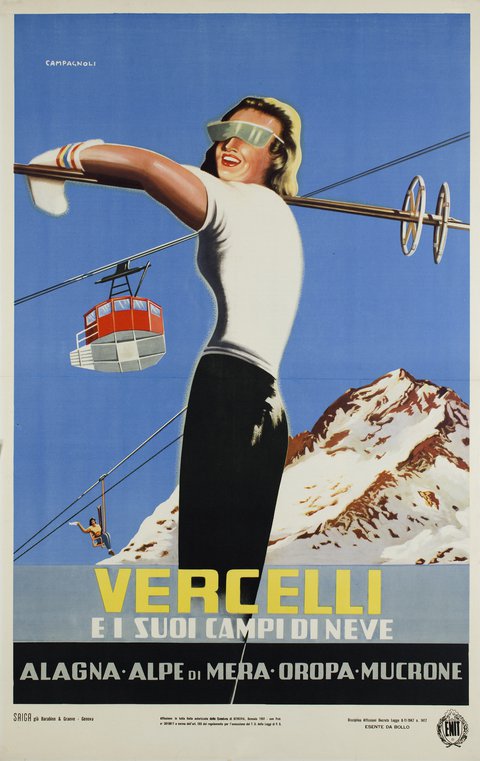
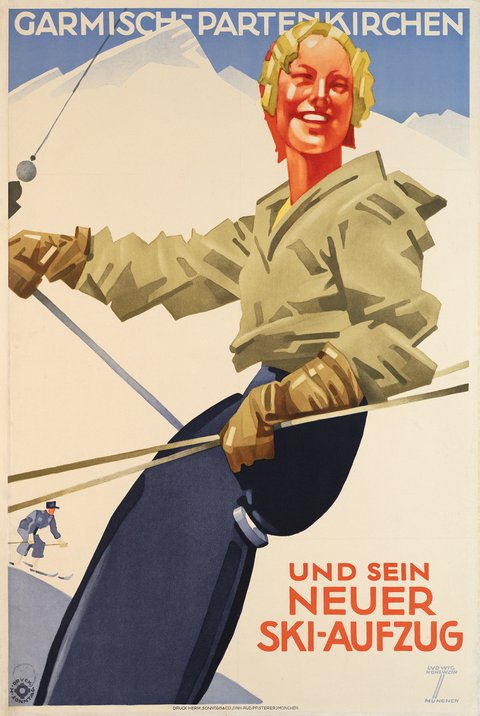
SKIING THROUGH THE ALPS 2023

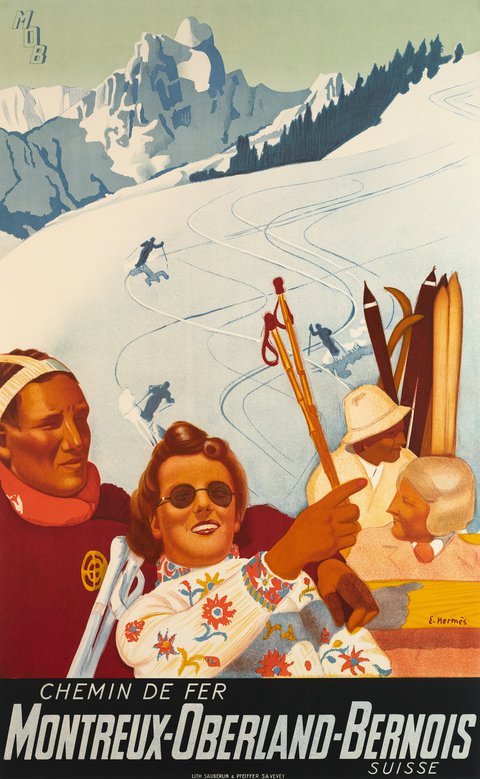

SKI SALE 2023
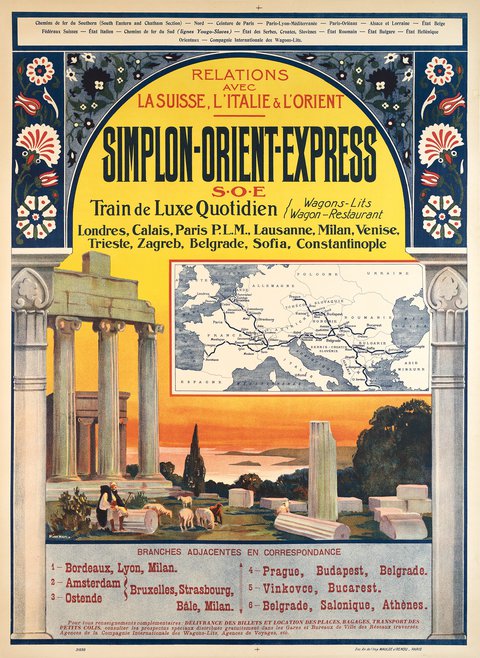


Orient-Express



Advertising Archaeology



STAR WARS POSTERS
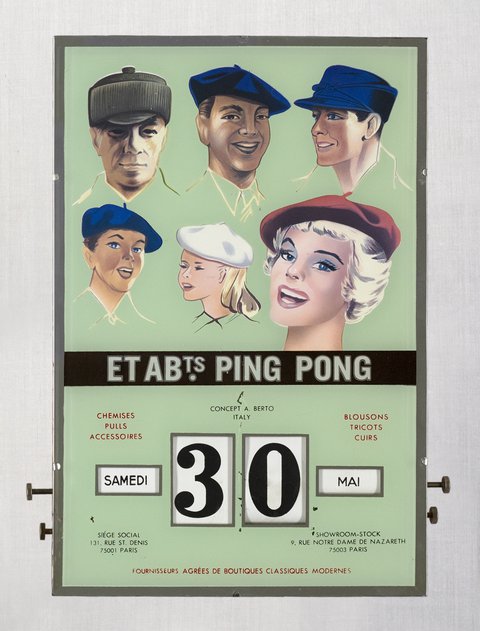


Perpetual calendars



Safety at work in the URSS
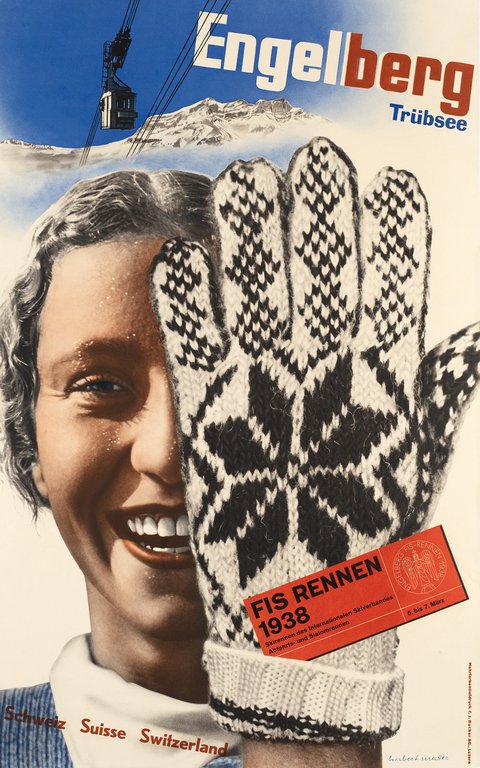

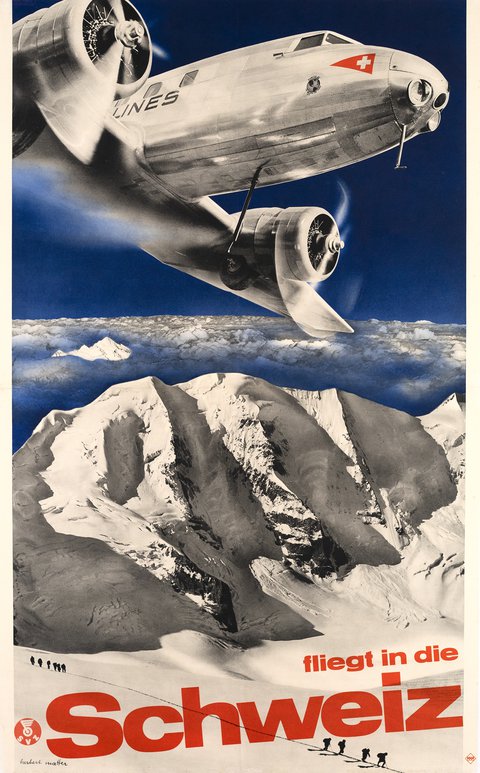
Herbert Matter poster



Visit france !
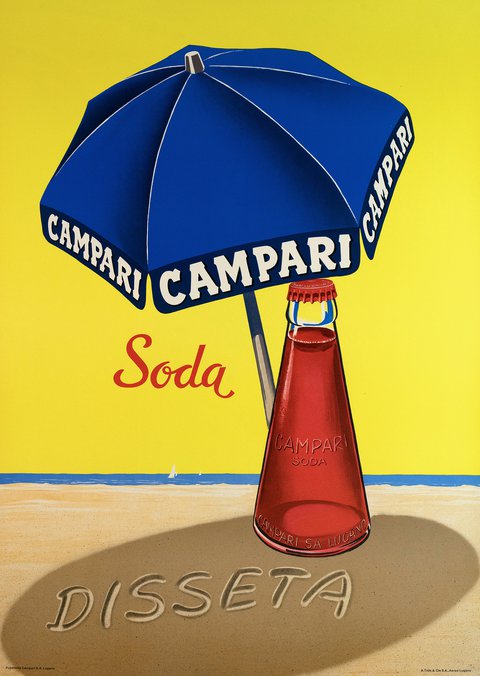
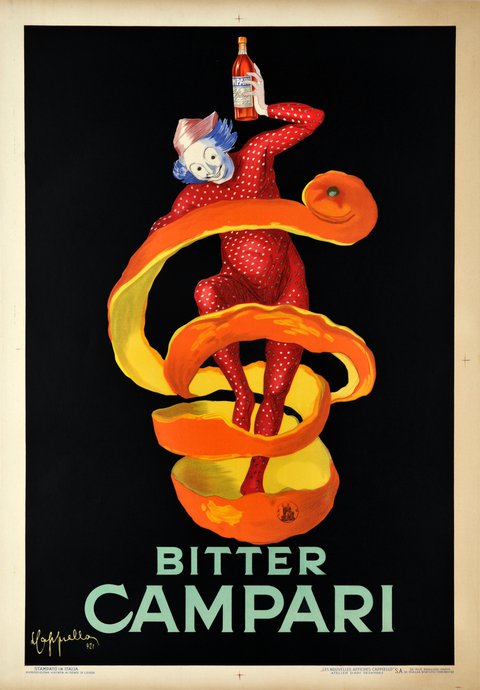

Campari Poster
The Picon posters



Vevey Fête des Vignerons posters



The Conquest of Space
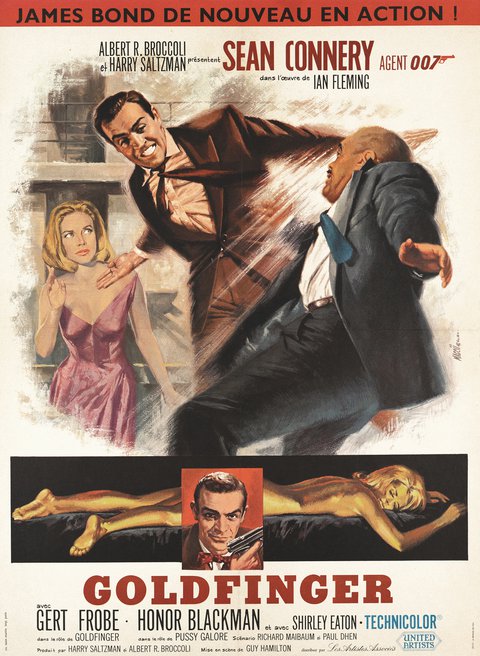


James Bond 007 posters



Ski posters - Winter sports posters



PROPAGANDA - 120 years of Swiss political posters
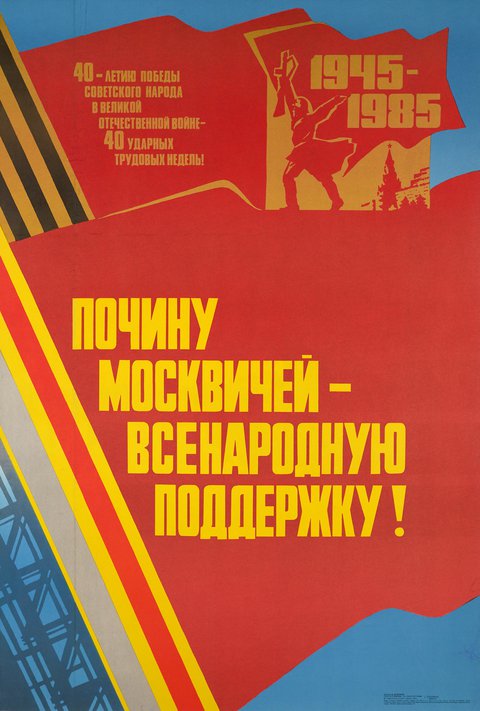


PROPAGANDA - Soviet Posters

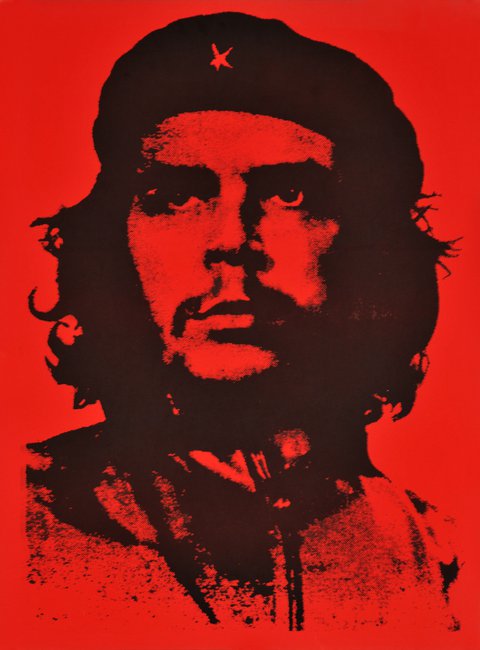
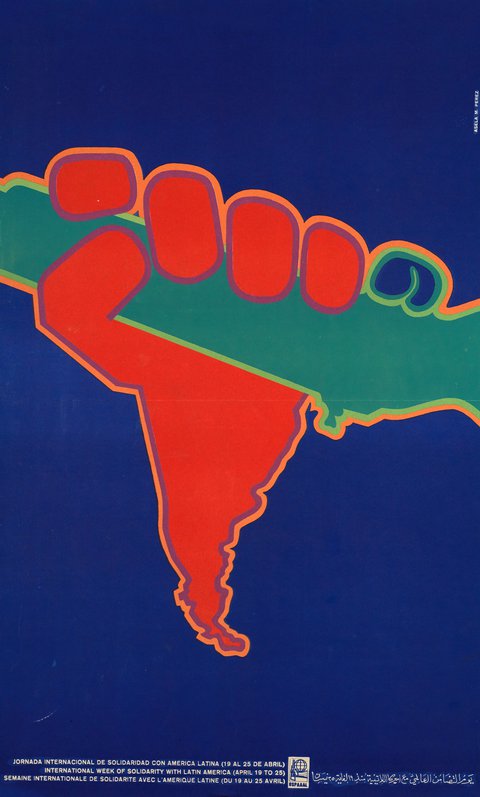
Propaganda - 120 years of International propaganda posters - 1898 - 1918 - 1968 - 2018



Winter Olympic Poster



The Swissair Poster Collection


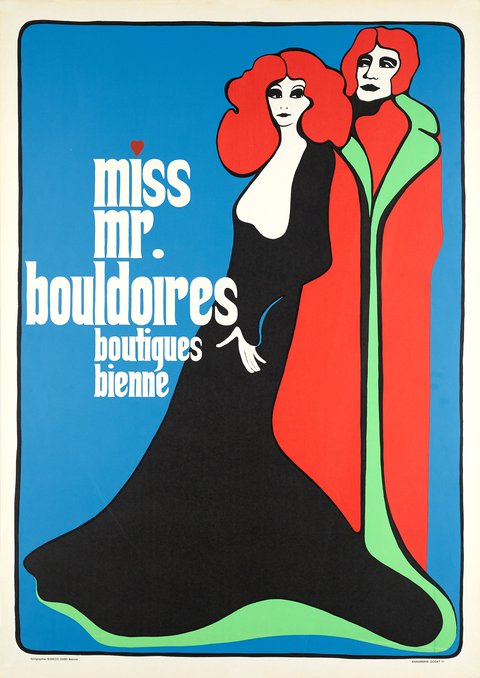
Psychedelic posters in Europe



The object poster Sachplakat
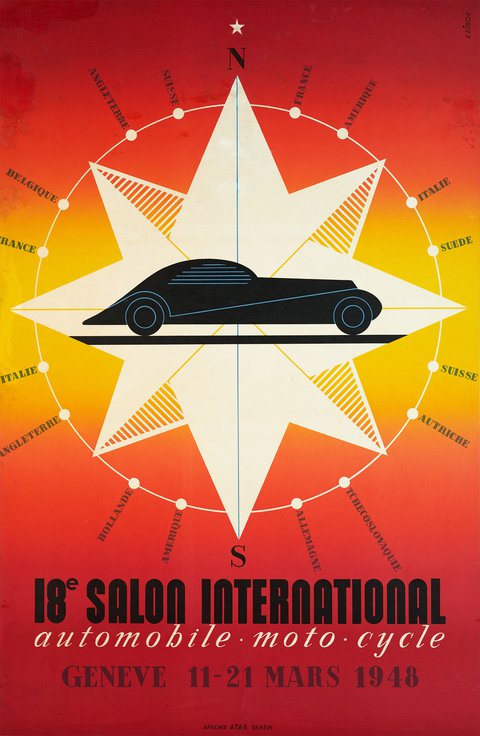

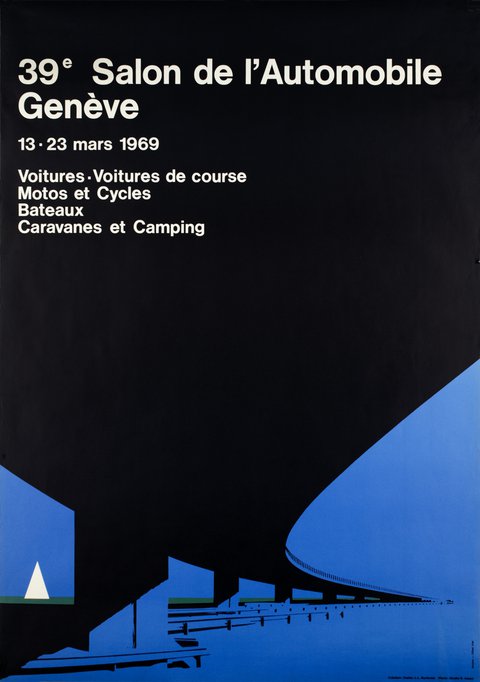
Le Salon de l'auto Genève



Geneva vintage posters


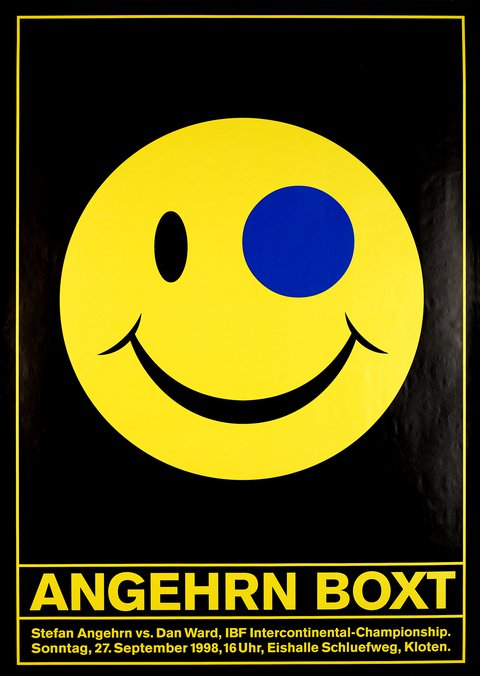
Swiss Poster Award

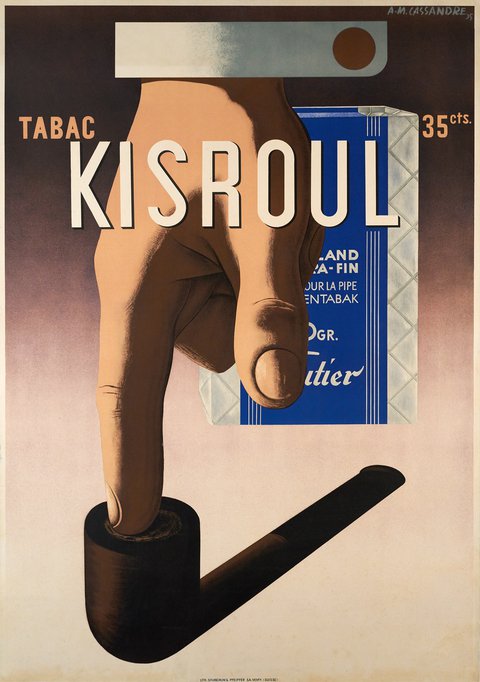
The Vautier tobacco company by Cassandre


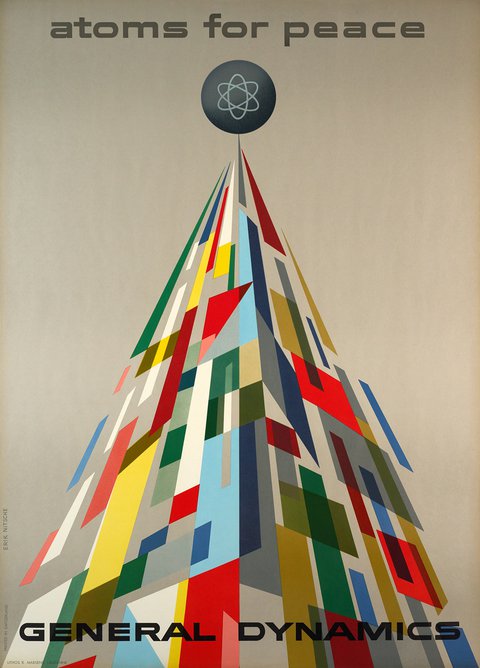
General Dynamics






